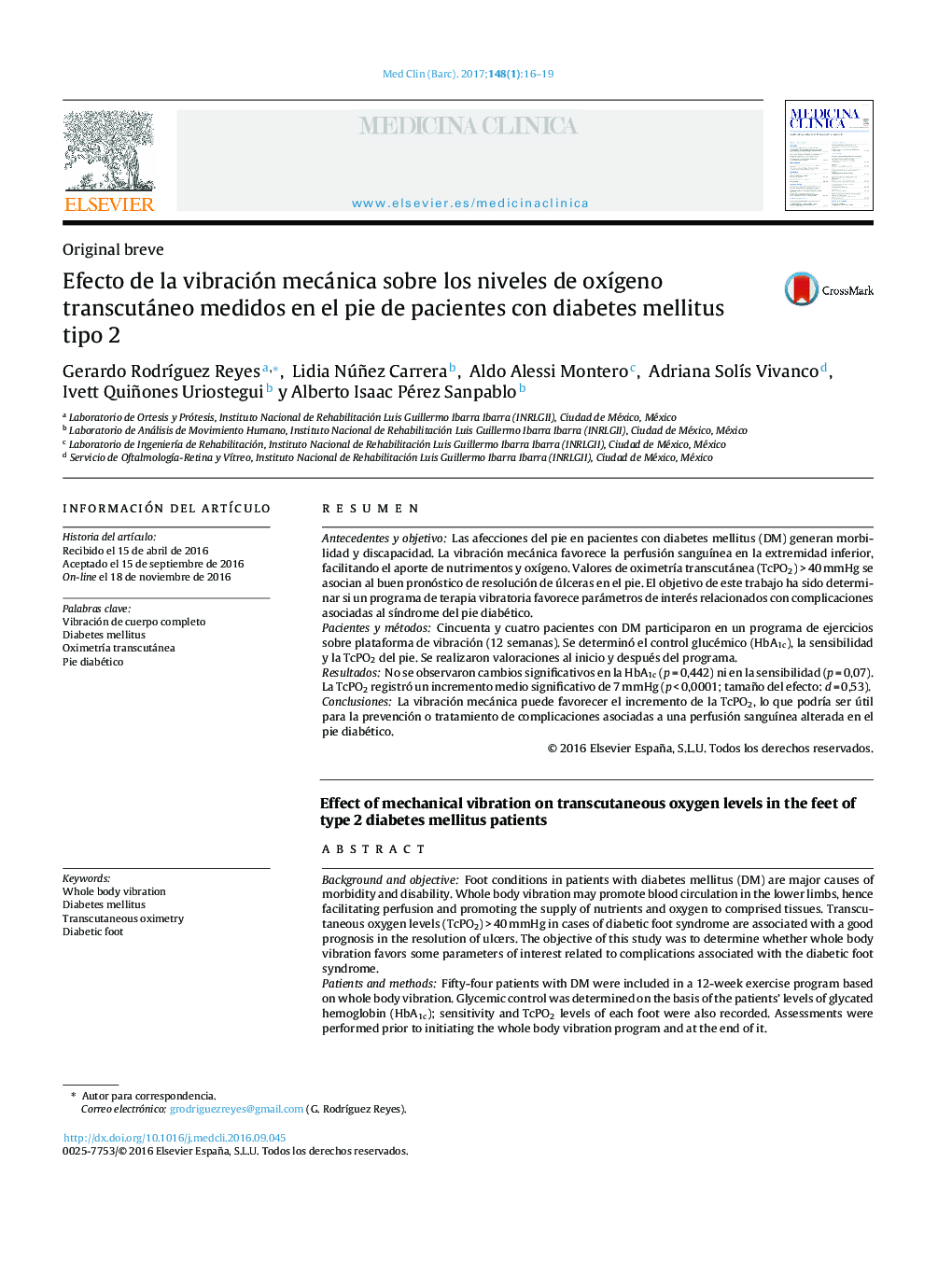| کد مقاله | کد نشریه | سال انتشار | مقاله انگلیسی | نسخه تمام متن |
|---|---|---|---|---|
| 5680875 | 1408794 | 2017 | 4 صفحه PDF | دانلود رایگان |

ResumenAntecedentes y objetivoLas afecciones del pie en pacientes con diabetes mellitus (DM) generan morbilidad y discapacidad. La vibración mecánica favorece la perfusión sanguÃnea en la extremidad inferior, facilitando el aporte de nutrimentos y oxÃgeno. Valores de oximetrÃa transcutánea (TcPO2) > 40 mmHg se asocian al buen pronóstico de resolución de úlceras en el pie. El objetivo de este trabajo ha sido determinar si un programa de terapia vibratoria favorece parámetros de interés relacionados con complicaciones asociadas al sÃndrome del pie diabético.Pacientes y métodosCincuenta y cuatro pacientes con DM participaron en un programa de ejercicios sobre plataforma de vibración (12 semanas). Se determinó el control glucémico (HbA1c), la sensibilidad y la TcPO2 del pie. Se realizaron valoraciones al inicio y después del programa.ResultadosNo se observaron cambios significativos en la HbA1c (p = 0,442) ni en la sensibilidad (p = 0,07). La TcPO2 registró un incremento medio significativo de 7 mmHg (p < 0,0001; tamaño del efecto: d = 0,53).ConclusionesLa vibración mecánica puede favorecer el incremento de la TcPO2, lo que podrÃa ser útil para la prevención o tratamiento de complicaciones asociadas a una perfusión sanguÃnea alterada en el pie diabético.
Background and objectiveFoot conditions in patients with diabetes mellitus (DM) are major causes of morbidity and disability. Whole body vibration may promote blood circulation in the lower limbs, hence facilitating perfusion and promoting the supply of nutrients and oxygen to comprised tissues. Transcutaneous oxygen levels (TcPO2) > 40 mmHg in cases of diabetic foot syndrome are associated with a good prognosis in the resolution of ulcers. The objective of this study was to determine whether whole body vibration favors some parameters of interest related to complications associated with the diabetic foot syndrome.Patients and methodsFifty-four patients with DM were included in a 12-week exercise program based on whole body vibration. Glycemic control was determined on the basis of the patients' levels of glycated hemoglobin (HbA1c); sensitivity and TcPO2 levels of each foot were also recorded. Assessments were performed prior to initiating the whole body vibration program and at the end of it.ResultsNo significant changes were observed in the patients' HbA1c (P = .442) levels or sensitivity (P = .07). A significant 7 mmHg increase (P < .0001; effect size: d = 0.53) was observed in the concentration of TcPO2.ConclusionsWhole body vibration may increase TcPO2 levels with useful implications for the prevention or management of complications associated with restricted blood perfusion in the diabetic foot syndrome.
Journal: Medicina ClÃnica - Volume 148, Issue 1, 6 January 2017, Pages 16-19